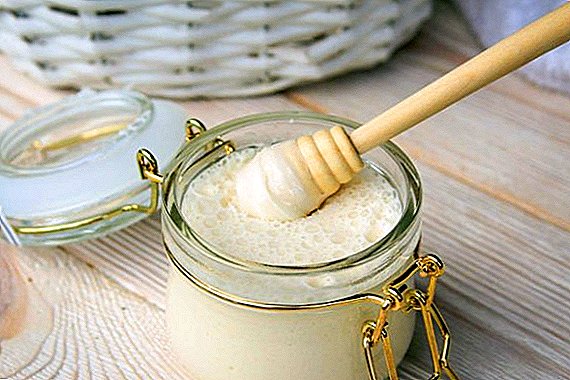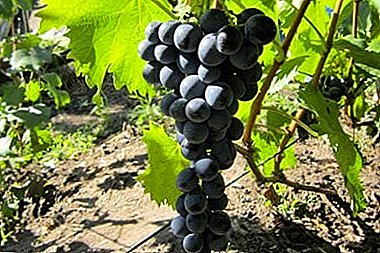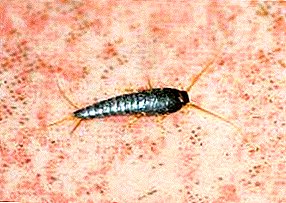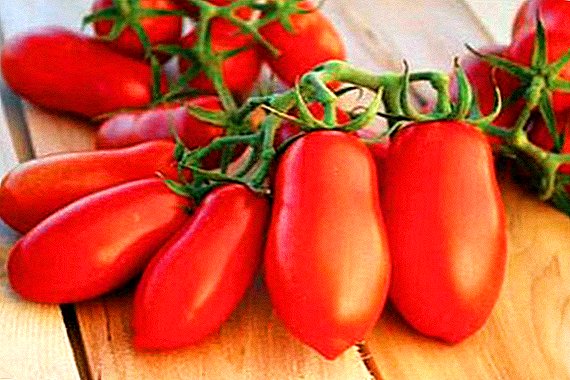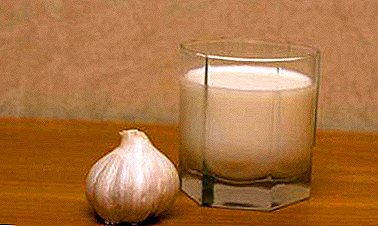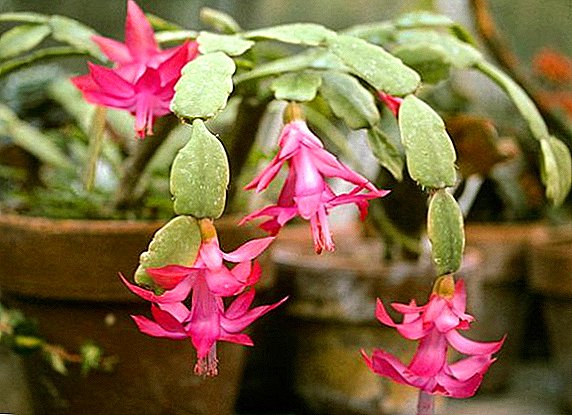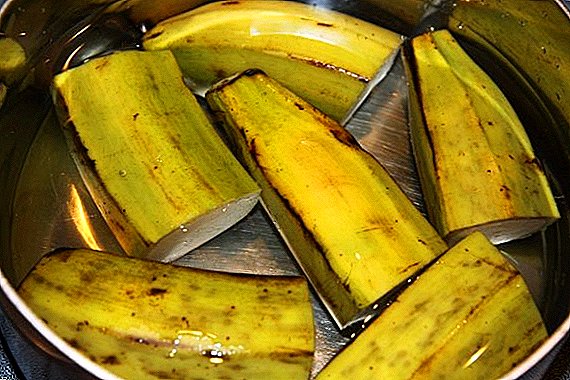 For some, such a thing as fertilizer from banana skins, - a thing quite familiar and acceptable. And someone may be surprised at such an unusual use of waste. In any case, each of you, dear readers, will be interested to know why banana peel is considered one of the best bases for the preparation of potash fertilizer for seedlings and flowers. You will learn the simplest and most interesting recipes for making this wonderful remedy, and you will also be able to see in practice the invigorating properties of this product.
For some, such a thing as fertilizer from banana skins, - a thing quite familiar and acceptable. And someone may be surprised at such an unusual use of waste. In any case, each of you, dear readers, will be interested to know why banana peel is considered one of the best bases for the preparation of potash fertilizer for seedlings and flowers. You will learn the simplest and most interesting recipes for making this wonderful remedy, and you will also be able to see in practice the invigorating properties of this product.
Banana skins as fertilizer
The fact that banana skins are ideal for feeding plants can be understood immediately by examining the composition of this fruit. Bananas contain large amounts of potassium, calcium, phosphorus and magnesium. This complex of vitamins and minerals is very useful not only for the human body, but also for the growth, flowering and fruiting of plants. And as you know, the skin of vegetables and fruits often has an even richer and richer composition of microelements than the fruit itself. This was a prerequisite to the use of banana peel as a fertilizer for indoor, outdoor and greenhouse plants many years ago. When all these organic elements decompose in the soil, they are well nourished by the plants, contributing to violent growth and flowering. 
Did you know? In the peel of commercial bananas there is a large amount of growth hormone, since they are torn off immature and are specially processed for ripening at the time of sale. Fertilizers prepared on the basis of this raw material stimulate seed germination, rooting of seedlings and the development of young shoots.
Application
Fertilizer from banana skins is actively used to stimulate the germination of seedlings, as well as to feed indoor and greenhouse plants, mainly those that suffer from lack of sunlight and heat. After all, magnesium, which is contained in this fruit, contributes to photosynthesis. Such a potassium drug is especially useful for winter greenhouse plants. He is very loved crucifers. Cucumbers, tomatoes and cabbage will also be very grateful to you for such a "treat".
Fertilizers from banana skins are very fond of cruciferous plants: katran, cabbage, Levkoy, horseradish and rape.

Shredded Fresh Peel
This is the easiest, but very effective way of feeding seedlings and seedlings. Fresh peel is cut into pieces and buried in the hole under the root of the plant. It is interesting that after ten days nothing remains of the skins - they completely decompose, giving themselves to the plant. After such a reception, even sickly and painful greens begin to actively grow, acquire a rich color and healthy appearance.
Important! It is worth remembering that on the surface of the skins can remain for a long time harmful substances that are processed bananas during transportation to extend their presentation. Before using the peel must be thoroughly washed and it is better not to use this method for fruit plants.One trick will not be able to get rid of absolutely all harmful impurities, since a significant part of them is contained in the skin itself. To protect yourself against fertilizing fruit plants, banana peels should be treated better.

Dried fertilizer
This is one of the most convenient and safe types of fertilizer for indoor plants, which can be made from banana peel. Of course, it can be used both for street and for greenhouse green pets. Dried tops are crushed in a mortar or ground with a coffee grinder, then sprinkled with this powder on the ground in a pot or on a garden bed, watered and after a while admire the result - a flowering and vibrant healthy plant. There are several ways to dry banana peels:
- The most popular method is drying the skins in an oven or electric dryer. To do this, they are placed in the oven for several hours at a minimum temperature. The plant dries out, however, some of the nutrients evaporate with moisture, and harmful chemicals may remain in the skin.
- Drying on the windowsill or on the battery. It is also quite an effective method, the main thing is to cover insect skin with gauze. The downside is that it is a fairly long process, and for all the time, raw materials can rot in the sun.
- To wither banana peels in the sun in a suspended state in the fresh air. For this, banana peels are strung on a string and hung in a sunny, well-ventilated place, like mushrooms. Thus, the whole complex of vitamins and minerals remains in the composition, and there is no trace of harmful impurities.

Did you know? In addition to dessert sweet varieties of bananas, there are also canteens, called plantants. They are fresh and taste like potatoes. They can fry, bake, simmer, boil and even cook chips from them.
Liquid feeding
This method is universal and well suited for all types of plants.
- Before you prepare a liquid dressing, the banana peel must be washed, cut into small strips and put in a three-liter jar.
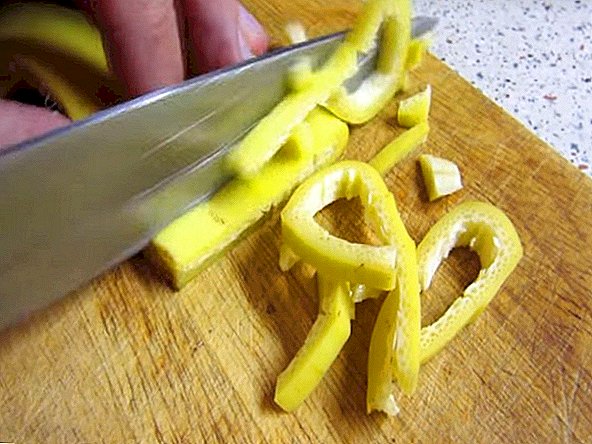
- Pour water at room temperature and leave for 2-3 days.
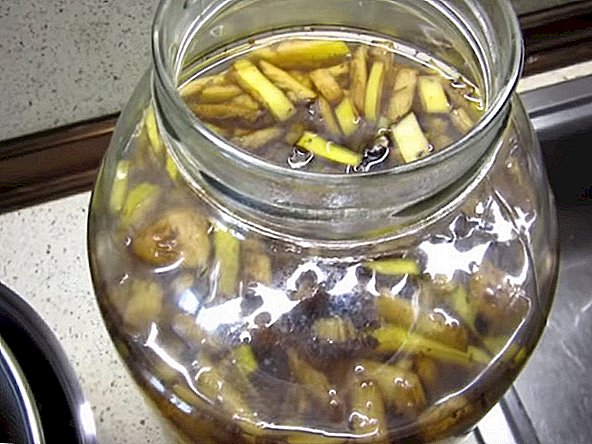
- After that, the infusion is filtered, diluted one-to-one with water and watered, irrigated, feed the soil, plants, seeds and seedlings.
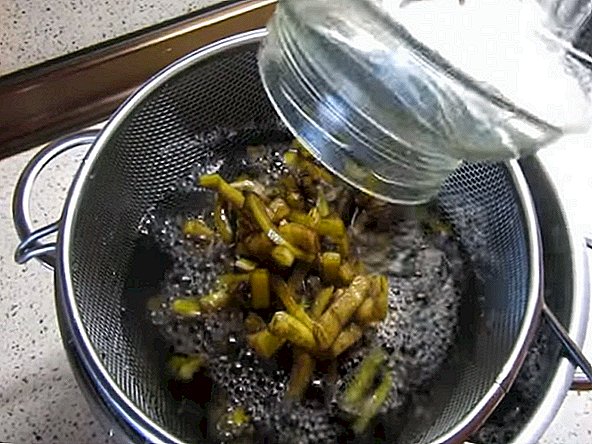
There is also a simple banana-skinned cocktail-fertilizer recipe.
- The skin of one banana.
- Glass of water.
Another recipe for liquid feeding - spray. This fertilizer is based on banana leaves.
- Skins 4 bananas.
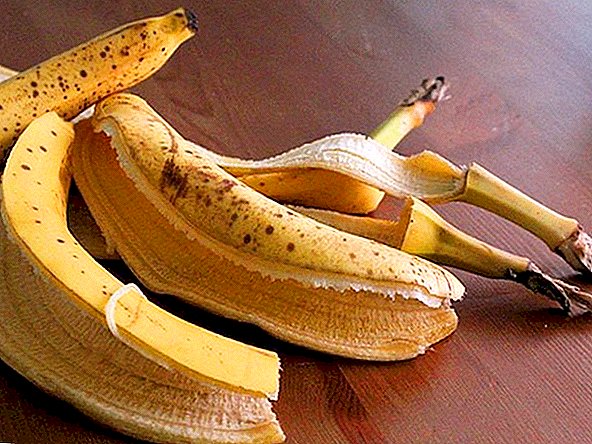
- Powdered eggshell - 2 tsp. with a slide.

- Water - 1 l.
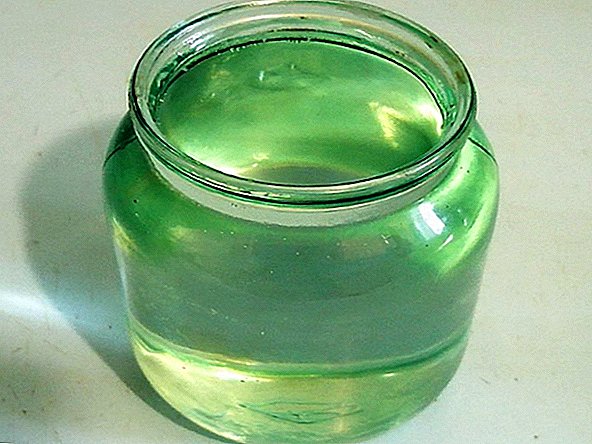
- Magnesium sulfate - 20 g
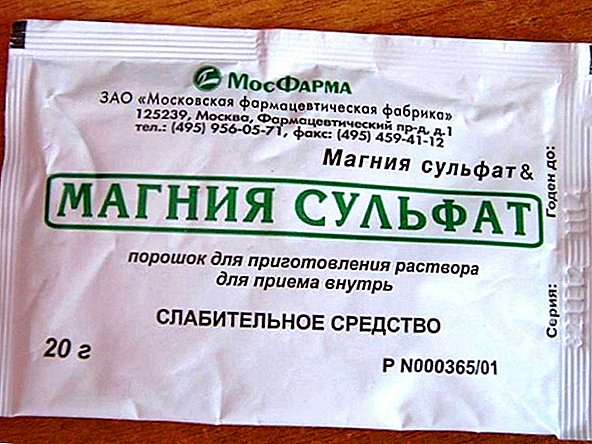 Skins must be dried and slaughtered to a state of powder. Mix with eggshell and magnesium sulfate, cover with water and shake well. You can spray your plants with such a tool no more than once a week; the fertilizer should be stored in a refrigerator (heated to a temperature of 20-22 degrees before use).
Skins must be dried and slaughtered to a state of powder. Mix with eggshell and magnesium sulfate, cover with water and shake well. You can spray your plants with such a tool no more than once a week; the fertilizer should be stored in a refrigerator (heated to a temperature of 20-22 degrees before use). 
Banana Skin Compost
In order to prepare banana compost, you just need to add a few finely chopped banana skins to a good black oily ground, pour it all on any sourdough, such as Baikal, and mix well. After a month of infusing such compost, you can fertilize the beds, bushes and trees.
Important! This type of fertilizer is well suited for all onion, but is contraindicated for cabbage, root crops and green crops.


Freeze waste
Freezing is one of the ways to remove all harmful chemicals from banana skins, as well as to keep them fresh so that you can feed your garden and greenhouses with fresh fertilizer at any time. Just get a tray for banana skins in your freezer and as they arrive, instead of throwing it away, throw fresh waste into it.
Can I use the peel of other fruits?
Banana peel fertilizer refers to organic fertilizer. In organics, there are also examples of the use of onion or potato tops to fertilize indoor and outdoor plants and flowers.
Organic fertilizers such as feces, tobacco dust, slurry, onion peel, biohumus, nettle solution, Signor Tomato, charcoal, yeast dressing, potassium salt, peat, manure, and drug NV-101 strengthen your plants and saturate them. beneficial substances and promote rapid growth.For example, if you take 20 grams of onion peel, pour them five liters of water and insist for three to four days, you get an excellent infusion for watering and spraying flowers and seedlings. This hood is excellent against unnecessary microorganisms. Excellent seedling tomatoes.


Or if the broth, in which potatoes were boiled, is not to be poured, but plants and flowers are poured over them, they will be very grateful to you, since the starch that has fallen from the potatoes into the water is a cumulative beneficial substance that the plants put in their bulbs and seeds stock. "
You can also use broths and powders based on citrus peels. They supply the soil with nitrogen and with their fragrance they keep pests at a safe distance.
Now everyone, even those who have never heard of this type of utilization of banana waste, such as cooking fertilizer from them, after reading our article, can try this method of feeding plants in their practice. Successes to you and a good harvest!








 Skins must be dried and slaughtered to a state of powder. Mix with eggshell and magnesium sulfate, cover with water and shake well. You can spray your plants with such a tool no more than once a week; the fertilizer should be stored in a refrigerator (heated to a temperature of 20-22 degrees before use).
Skins must be dried and slaughtered to a state of powder. Mix with eggshell and magnesium sulfate, cover with water and shake well. You can spray your plants with such a tool no more than once a week; the fertilizer should be stored in a refrigerator (heated to a temperature of 20-22 degrees before use). 
